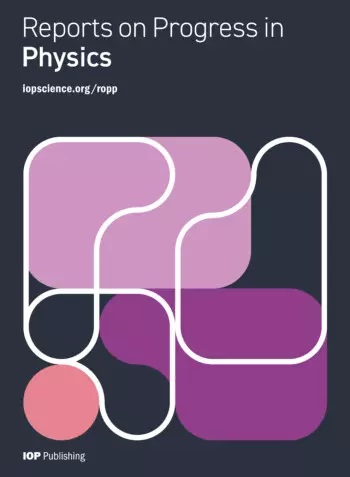迈向理解非晶固体中的两能级系统:来自量子电路的见解
IF 20.7
1区 物理与天体物理
Q1 PHYSICS, MULTIDISCIPLINARY
引用次数: 273
摘要
无定形固体在低温下表现出令人惊讶的普遍行为。普遍的看法是,这可以用材料中存在的双态缺陷来解释。所谓的标准隧道模型已经成为解释这些结果的既定框架,但它仍然没有回答一个核心问题——什么是两层缺陷(TLS)?最近,随着超导电路在量子计算、电路量子电动力学、磁强计、电测量和计量学中的兴起,这个问题变得更加紧迫。由铝或铌制成的超导电路基本上受限于由包裹它们的非晶氧化层中的TLS造成的损耗。另一方面,这些电路也为研究限制其工作的缺陷提供了一种新颖而有效的方法。我们现在可以超越集合测量,探测单个缺陷——观察它们动力学的量子性质,研究它们的形成,它们的行为作为应用场、应变、温度和其他特性的函数。本文回顾了这一领域大量的最新实验结果,并讨论了用于描述观测结果的各种理论模型。在此过程中,它总结了目前解决固态物理学中这一根本性重要问题的方法。本文章由计算机程序翻译,如有差异,请以英文原文为准。
Towards understanding two-level-systems in amorphous solids: insights from quantum circuits
Amorphous solids show surprisingly universal behaviour at low temperatures. The prevailing wisdom is that this can be explained by the existence of two-state defects within the material. The so-called standard tunneling model has become the established framework to explain these results, yet it still leaves the central question essentially unanswered—what are these two-level defects (TLS)? This question has recently taken on a new urgency with the rise of superconducting circuits in quantum computing, circuit quantum electrodynamics, magnetometry, electrometry and metrology. Superconducting circuits made from aluminium or niobium are fundamentally limited by losses due to TLS within the amorphous oxide layers encasing them. On the other hand, these circuits also provide a novel and effective method for studying the very defects which limit their operation. We can now go beyond ensemble measurements and probe individual defects—observing the quantum nature of their dynamics and studying their formation, their behaviour as a function of applied field, strain, temperature and other properties. This article reviews the plethora of recent experimental results in this area and discusses the various theoretical models which have been used to describe the observations. In doing so, it summarises the current approaches to solving this fundamentally important problem in solid-state physics.
求助全文
通过发布文献求助,成功后即可免费获取论文全文。
去求助
来源期刊

Reports on Progress in Physics
物理-物理:综合
CiteScore
31.90
自引率
0.00%
发文量
45
审稿时长
6-12 weeks
期刊介绍:
Reports on Progress in Physics is a highly selective journal with a mission to publish ground-breaking new research and authoritative invited reviews of the highest quality and significance across all areas of physics and related areas. Articles must be essential reading for specialists, and likely to be of broader multidisciplinary interest with the expectation for long-term scientific impact and influence on the current state and/or future direction of a field.
 求助内容:
求助内容: 应助结果提醒方式:
应助结果提醒方式:


